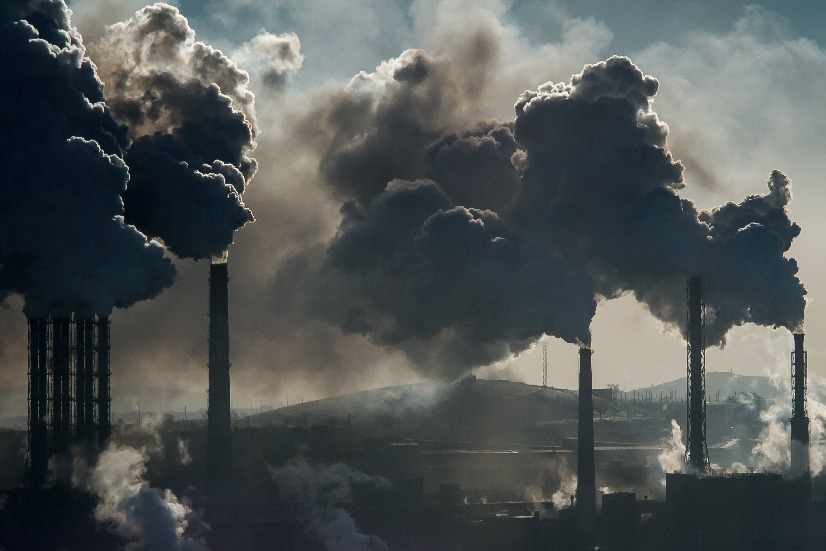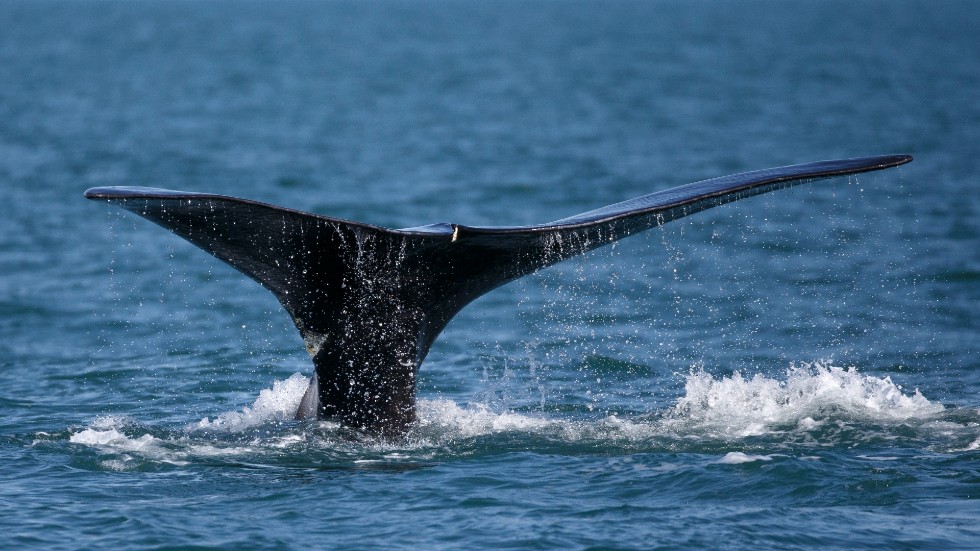Equilibrium/Sustainability — India seeks to break China’s lock on solar

Today is Wednesday. Welcome to Equilibrium, a newsletter that tracks the growing global battle over the future of sustainability. Subscribe here: digital-stage.thehill.com/newsletter-signup.
A major Indian solar developer has begun building its own solar panel factories in an attempt to “break China’s lock on the solar supply chain,” The Wall Street Journal reported.
“If we continue to just import solar modules from China, then we’re trading one kind of energy dependence — on oil from the outside — to solar modules which are also coming from the outside,” Sumant Sinha, chairman and chief executive of Indian solar giant Renew, told the Journal.
Indian Prime Minister Narendra Modi has called for his country to meet half its energy needs with renewables by 2030, which is equivalent to installing nearly half of all current renewable capacity in one country in less than a decade.
To meet these goals by means of domestic solar manufacturing, India’s government is using a broad policy toolkit: temporary bans on importing Chinese panels, import duties on those from other sources and hundreds of millions of dollars in subsidies.
Today we’ll look at possible downsides from fossil fuel use that go far beyond energy dependence. Then we’ll turn to a new multi-state partnership that will invest $200 million in Colorado River conservation projects.
For Equilibrium, we are Saul Elbein and Sharon Udasin. Please send tips or comments to Saul at selbein@digital-stage.thehill.com or Sharon at sudasin@digital-stage.thehill.com. Follow us on Twitter: @saul_elbein and @sharonudasin.
Let’s get to it.
Fossil fuels may affect fertility, sperm count

A substantial drop in fertility rates over the past half century may be linked to pollution from the burning of fossil fuels — and the migration of chemicals in oil and plastics into virtually all components of modern life, according to a study in Nature.
First words: “It is well established that these chemicals have become part of our tissues and fluids,” the authors wrote.
“But do they contribute to the current epidemic of infertility? We know that they can be a threat to wildlife. Unfortunately, too little has been done to uncover their role in humans.”
Falling fertility, rising chemicals: More than half the world’s population lives in regions where the birth rate is insufficient to replace the existing population.
Meanwhile, the authors noted there has been a rise in the use of fossil fuels, which are “not only energy sources, but they are also the basic raw materials for the production of more than 100,000 synthetic chemicals.”
These chemicals are found in all aspects of modern life — and in the “blood, urine, semen, placenta and breast milk of all humans investigated,” according to the study.
These changes go along with a fall in sperm counts, which declined among the general population of Western men by 52 percent between 1973 and 2011 — a decrease of 1.5 percent per year.
Declines in sperm count and quality had gone alongside a worldwide rise in testicular cancers, which the scientists hypothesized is the “canary in the coal mine” for other disorders in sperm production.
What about fertility in women? Similarly, women in the U.S. have experienced a steady rise in “unintended pregnancy loss” like miscarriages and stillbirths, which have increased 1 to 2 percent per year since 1990.
Declines in female fertility are also often ascribed to women choosing to have children later. But even older women seem to have become less fertile, the study found.
“Solid data on age-specific fertility rates in Denmark since 1901 suggest that more women in their late 30s and 40s were able to carry pregnancies to term in 1901 than now,” the authors wrote.
This finding might mean that more couples are experiencing lower fertility as they age than they might have a century ago, the study found.
MORE QUESTIONS THAN ANSWERS
Evolution isn’t enough to explain these factors: “The fact that the changes have occurred over a period of only a couple of generations suggests that environmental factors have a role,” the authors wrote.
The paper sketches out a hypothesis: That there is a connection of some sort between the contaminants and chemicals of the fossil fuel age, and the simultaneous fall in fertility — one which goes beyond the social factors usually blamed for the decline.
Is there any direct evidence for that? Yes, though it’s circumstantial. A graph plotting the risk that Danish men would develop testicular cancer “mirrors” that for fossil fuel imports, the study said. That means that incidence of cancers decreased and fertility rates rose as Danish oil imports slowed during World War II.
And in China, where repeated studies have shown “a remarkable decline in semen quality among sperm donors,” other investigations “have linked air pollution to changes in semen quality.”
What do we do? Conduct more research — urgently. The authors urged public health authorities to gather more data to uncover whether specific chemicals are linked to declines in human fertility.
Last words: “If the fertility problems are, at least partly, due to anthropogenic activities that are causing increased environmental exposure to harmful chemicals, in addition to effects on climate,” they wrote, “decisive regulatory actions underpinned by unconventional, interdisciplinary research collaborations will be needed to reverse the trends.”
Agencies announce investment in Lake Mead

State water agencies in Arizona, California and Nevada announced a $200 million investment in Colorado River conservation projects on Wednesday, in a last-ditch effort to keep the basin’s biggest reservoir from dwindling to dangerously low levels.
The collaboration, which also includes the Department of the Interior, will aim to add 500,000 acre-feet of additional water to Lake Mead in 2022 and 2023 by facilitating water conservation initiatives in the Lower Colorado River Basin.
That additional water, which is enough to provide for 1.5 million households each year, would boost the reservoir’s level by 16 feet, a news release from the agencies said.
First words: “Two decades of drought on the Colorado River is taking a toll across the Basin and on Lake Mead,” U.S. Bureau of Reclamation Commissioner Camille Calimlim Touton said in a statement.
“By working together we’ve staved off these historic low levels for years, thanks to collaboration and conservation in the Lower Basin,” she continued. “But we need even more action, and we need it now.”
Who’s involved? The partners include the Bureau of Reclamation, the Arizona Department of Water Resources, Central Arizona Project (CAP), the Metropolitan Water District of Southern California, and the Southern Nevada Water Authority. They signed a memorandum of understanding — called “the 500+ Plan” — during the Colorado River Water Users Association’s annual conference in Las Vegas.
What’s in the deal? The Arizona Department of Water Resources will commit up to $40 million to the initiative over two years, with CAP, Metropolitan and Southern Nevada Water Authority each contributing up to $20 million. The federal government has pledged to match these commitments, which will bring total funding to $200 million, the news release said.
One conservation effort detailed in the deal is an initiative to financing crop fallowing — paying farmers not to sow their fields — in order to save water. Implementing city conservation programs, meanwhile, would help reduce diversions from Lake Mead.
Links to the infrastructure bill: The 500+ Plan also aligns with a key ambition of the bipartisan infrastructure bill, which President Biden signed into law last month. The bill includes an $8.3 billion investment in water infrastructure, which aims to minimize the impacts of drought and create a long-term plan for conservation and economic growth, the partners noted.
PROTECTING ‘A VITAL RIVER SYSTEM’
Building on past partnerships: Arizona, California and Nevada — the three Lower Basin states — had already come together in 2019 to sign the Lower Basin Drought Contingency Plan (DCP), agreeing to contribute water to Lake Mead if it declined to certain levels, the partners noted.
“We had hoped the contributions made under the DCP would be enough to stabilize Lake Mead while we seek longer-term solutions to the challenges on the Colorado River,” Metropolitan General Manager Adel Hagekhalil. “But they aren’t, which is why we are moving forward with the 500+ Plan.”
A strengthening commitment to collaboration: While negotiations on the 2019 DCP took more than five years to complete, the 500+ partnership “came together in a matter of a few months,” according to Arizona Department of Water Resources Director Tom Buschatzke.
“That alone is a powerful testament to the commitment of the Lower Basin States to work together with our partners at Reclamation to protect this vital river system,” Buschatzke said.
Last words: While the past few months “presented tremendous challenges with the additional pressure of the need to work quickly,” CAP General Manager Ted Cooke stressed that these obstacles did not drive the partners apart.
“This difficult situation further strengthened our relationships,” Cooke added.
RECIRCULATING TOXINS
A new study has revealed that many of the “forever chemicals” that end up in the ocean can actually “boomerang back to shore,” as crashing waves reemit the toxic compounds into coastal air, as reported in The Hill.
This counters previous assumptions that the chemicals would become diluted in the ocean over the course of decades, the scientists said.
Wildlife Wednesday

Tangled whales, spying on wildlife, and a wild ride ends for a pair of renegade zebras.
Entangled whales can’t be released with newborn calf
- Scientists that have been monitoring an endangered North Atlantic right whale, nicknamed Snow Cone, that gave birth while trapped in two 16-foot strands of fishing rope say there is minimal chance of removing the rope while her calf is young, according to The Guardian.
- “Right whale calves swim very close to their moms, making a safe approach by responders highly problematic if not impossible,” a National Oceanic and Atmospheric Administration (NOAA) post said. Estimates from NOAA indicate that there are only about 350 right whales in the North Atlantic, while Snow Cone and her newborn are only the second known new pairing of the 2021-22 breeding season, The Guardian reported.
Technology provides window into the ‘secret lives’ of wildlife
- Technological devices — such as a radio identification tag stuck on a wasp — are increasingly revealing previously unknown movements and behaviors of wildlife, The New York Times reported in an interactive slideshow. Each one of the 201 kakapo parrots left in the world wears a transmitter for remote monitoring, according to the Times.
- When a hawk wearing a camera and ultrasonic microphone flies through a swarm of bats, for example, it can help scientists understand how bats use echolocation in crowds — knowledge that could improve the design of autonomous vehicles, the Times reported. Hawaiian monk seals, meanwhile, can carry sensors to measure ocean water temperature and depth, the piece added.
Maryland zebras no longer at large
- A pair of zebras on the lam from a Maryland farm for more than three months have been caught and returned to their herd, The Associated Press reported.
- The zebras, who seem to have escaped while their fellows were being loaded onto trucks to winter in Florida, fled an owner who was charged by Prince George County with animal cruelty after another zebra was found dead just outside his property, the A.P previously reported.
That’s it for today. Please visit The Hill’s sustainability section online for the web version of this newsletter and more stories. We’ll see you Thursday.
Copyright 2023 Nexstar Media Inc. All rights reserved. This material may not be published, broadcast, rewritten, or redistributed. Regular the hill posts







